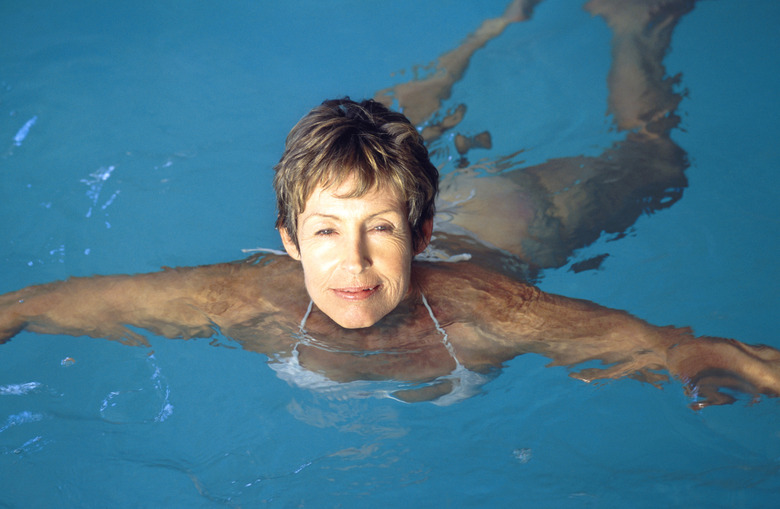Types Of Swimming Pool Drainage Systems
Without sophisticated draining devices and circulation systems, swimming pools would be unable to clean and maintain healthy water. Likewise, the primary reasons for installing a drainage system is to sufficiently clean, sanitize and empty pools. These drainage systems contain a combination of main drains or inlets, skimmers, overflow gutters and return fittings to achieve these tasks.
Step 1
Swimming pool drains or inlets originally served as conduits moving water between the pool and filter pumps. Pipes were hooked to the drain at the bottom of the pool so that homeowners and recreational facilities could clean the water. Submerged suction outlets in the drains used atmospheric pressure to push water toward the filter pumps and release water back into the pool. Pools constructed after World War II continued to use these drainage systems during the cleaning and filtering process. Today, main drains still channel sanitized water to pumps. However, alternative draining devices are increasingly being installed due to their better turnover rate for delivering clean pool water.
Skimmers
Step 1
Automated skimmers are just as effective as main drains at delivering clean water. However, their other job is to remove hair, leaves, dirt and other debris from pool water. NSF-rated skimmers — skimmers that have been rated by the National Sanitation Foundation (NSF) — can handle a water flow rate of up to 80 gallons per minute. Skimmers are generally installed along the wall of the pool, and connect to the suction line of a motorized pump. The small opening in the skimmer slowly lets in water, while preventing dirt and contaminants from going back into the pool. Perimeter overflow gutters also serve similar functions as skimmers to clean the surface of larger pools.
Step 2
- Swimming pool drains or inlets originally served as conduits moving water between the pool and filter pumps.
- Pipes were hooked to the drain at the bottom of the pool so that homeowners and recreational facilities could clean the water.
Return Fittings
Step 1
Return fittings play an important role in circulating and returning sanitized pool water. These devices work in concert with skimmers, directing water into all directions after filtration. Return fittings can be installed outside the pool's perimeter, in alcoves and around step areas. Generally, larger pools require more return fittings to adequately distribute sanitized water throughout the pool.
Misconceptions
Step 1
One misconception is that bottom drains are required to remove or empty water from pools. However, the Association of Pool & Spa Professionals claims this is a myth. The organization states, "The reality is that pool circulation pumps drawing their water through the piping systems from the bottom drains are terribly inefficient at emptying pools." Instead, high-volume centrifugal pumps are typically used to suction out water. Using this method, centrifugal pumps on average can empty a 15,000-gallon pool in less than two hours. In contrast, circulation pumps located in pool drains would take at least a full day to empty a pool of the same size.
Step 2
- Return fittings play an important role in circulating and returning sanitized pool water.
- Generally, larger pools require more return fittings to adequately distribute sanitized water throughout the pool.
